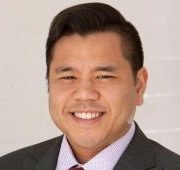SINCE its inception three decades ago, the ombudsman program has investigated elder abuse and other complaints on behalf of residents of California’s 1,300 nursing homes and more than 8,000 assisted living facilities. Many of the extraordinarily vulnerable people living in long term care facilities have no family or friends who visit or advocate for them.
Ombudsman staff and hundreds of state–certified volunteers fill this void by making regular visits to facilities and responding to residents’ complaints and concerns. Their front-line work has exposed countless incidents of neglect and abuse and often helps residents protect important rights that might otherwise be ignored.
In 2008, then-governor Arnold Schwarzenegger eliminated all state funding ($3.8 million) for California’s long term care ombudsman program. That represents about half of all funding for the ombudsman services.
The severe cuts are having a devastating impact on the network of about three–dozen nonprofit and county agencies that provide ombudsman services throughout California. Small programs in rural California are at risk of closing, while larger programs are laying–off many staff and drastically reducing services. Due to the cuts, the programs are unable to comply with various state mandates involving the protection of residents.
Now, more than ever, every person who has friends or relatives living in a nursing home should take seriously the responsibility of visiting them. Not only to make sure the staff is taking good care of them, but visits from family and friends give residents a special gift that they treasure. No matter how much staff and volunteers care for the residents, none of them can replace the family and friends that have been part of their lives.
If you are not happy with the nursing home your loved one is currently in, or if you have not placed your loved one in a nursing home yet (but anticipate the need to soon), remember that all nursing homes are not alike. Nursing homes vary in the quality of care and services they provide to their residents.
Reviewing health inspection results, staffing data, and quality measure data are three important ways to measure nursing home quality. This information gives you a “snap shot” of the care individual nursing homes give. To help you, The Centers for Medicare & Medicaid Services (CMS) has a web-site that will help you compare nursing homes more easily.
Visit “https://data.medicare.gov/data/nursing-home-compare“ and you’ll see a Five-Star Quality Rating System , much like the “A”, “B” or “C” posted outside your favorite restaurant. Nursing homes with 5 stars are considered to have much above average quality and nursing homes with 1 star are considered to have quality much below average:
(1) Health Inspections – The health inspection rating contains information from the last 3 years of onsite inspections, including both standard surveys and any complaint surveys. This information is gathered by individuals who go onsite to the nursing home and follow a specific process to determine the extent to which a nursing home has met Medicare’s minimum quality requirements. The most recent survey findings are weighted more than the prior two years. More than 200,000 onsite reviews are used in the health inspection scoring nationally.
(2) Staffing – The staffing rating has information about the number of hours of care on average provided to each resident each day by nursing staff. This rating considers differences in the level of need of care of residents in different nursing homes. For example, a nursing home with residents who had more severe needs would be expected to have a larger nursing staff than a nursing home where the resident’s needs were not as high.
(3) Quality Measures (QMs) – The quality measure rating has information on 10 different physical and clinical measures for nursing home residents – for example, the prevalence of pressure sores or changes to resident’s mobility. This information is collected by the nursing home for all residents. The QMs offer information about how well nursing homes are caring for their residents’ physical and clinical needs. More than 12 million assessments of the conditions of nursing home residents are used in the Five-Star rating system.
No rating system can address all of the important consideration that go into a decision about which nursing home may be best for a particular person. Since visits can improve both the residents quality of life and quality of care, it may often be better to select a nursing home that is very close, compared to a higher rated nursing home that would be far away.
* * *
Elder Law Services of California is proud to announce that attorney Andrew Paranal has joined its trust department. Mr. Paranal began his career in estate planning in 2013 and has since expanded into asset protection and Medi-Cal planning. He became interested in Elder Law after helping care for a family member who experienced a debilitating event. Mr. Paranal is excited to join an established law firm and hopes to educate his Filipino community about the tremendous benefits of proper estate planning.
For more information, please visit elderlawcalifornia.com or call 1-800-411-0546





